cucumbers
panhandlejan
14 years ago
Related Stories
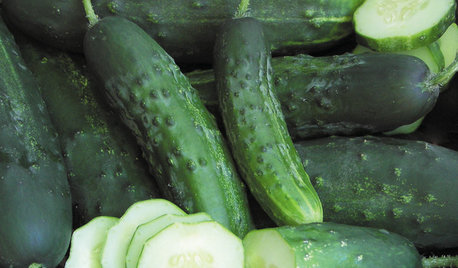
SUMMER FRUITS AND VEGETABLESSummer Crops: How to Grow Cucumbers
Pick a peck for pickles or opt for fewer and raw — no matter how you slice them, cucumbers are great for summer gardens small to large
Full Story
FARM YOUR YARDIf You Have Room for Only One Summer Crop ...
Get an edible that’s long on flavor even if you’re short on space, with a long-time gardener’s favorite picks
Full Story
EDIBLE GARDENSGarden BFFs? Why Your Vegetables Are Begging for Companion Plants
Foster friendships among plants for protection from pests, pollination support and color camaraderie
Full Story
FARM YOUR YARDHouzz Call: Home Farmers, Show Us Your Edible Gardens
We want to see where your tomatoes, summer squashes and beautiful berries are growing this summer
Full Story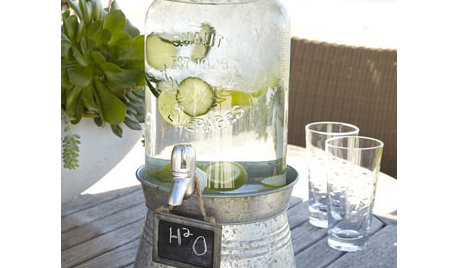
Guest Picks: We'll Drink to These!
Keep favorite summer drinks cold and at the ready with stylish holders and dispensers that are easy to take outside
Full Story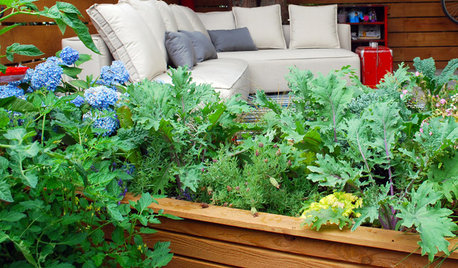
GARDENING GUIDESStep Right Outside for Fresh Herbs and Vegetables
Decks and patios can be convenient spots for edibles, and sometimes they even offer advantages over backyard gardens
Full Story
FARM YOUR YARD6 Things to Know Before You Start Growing Your Own Food
It takes time and practice, but growing edibles in the suburbs or city is possible with smart prep and patience
Full Story
EDIBLE GARDENSSummer Crops: How to Grow Squash
Almost foolproof and with cheerful flowers, squash comes in a wide range of varieties to plant in spring
Full Story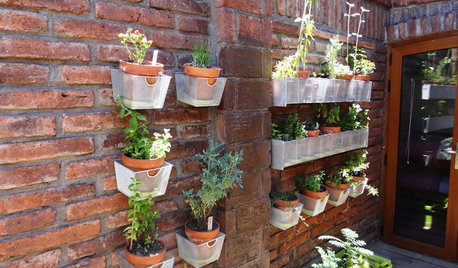
EDIBLE GARDENSHouzz Call: Where Are the Craziest Places You Grow Edibles?
Basil in a bathtub, spinach stacked up a wall ... If your edibles occupy an odd spot, we’d like to know
Full Story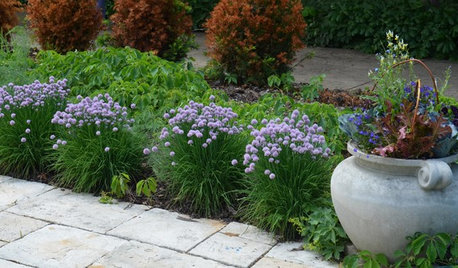
GARDENING GUIDESEdible Plants That Double as Ornamentals
Try growing these tasty plants with your ornamentals for an attractive garden and fresher meals
Full StorySponsored
Columbus Area's Luxury Design Build Firm | 17x Best of Houzz Winner!
More Discussions







shekanahh
Okiedawn OK Zone 7
Related Professionals
East Rancho Dominguez Landscape Architects & Landscape Designers · Glen Ellyn Landscape Architects & Landscape Designers · Braintree Landscape Contractors · Danvers Landscape Contractors · Haverhill Landscape Contractors · Medford Landscape Contractors · Methuen Landscape Contractors · Point Pleasant Landscape Contractors · West Coon Rapids Landscape Contractors · Westford Landscape Contractors · Golden Valley Landscape Contractors · Cedar Falls Decks, Patios & Outdoor Enclosures · Fort Myers Decks, Patios & Outdoor Enclosures · Kansas City Decks, Patios & Outdoor Enclosures · Redmond Decks, Patios & Outdoor Enclosuresdevilwoman
ilene_in_neok
Okiedawn OK Zone 7
soonergrandmom
quailhunter
elkwc
panhandlejanOriginal Author
mulberryknob
elkwc
tulsacityfarmer
jo3ponies
Okiedawn OK Zone 7